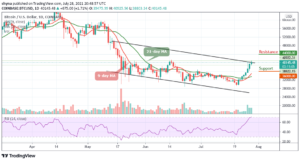
M2M/IoT market research provider Berg Insight released new findings on the mHealth market. Due to their report, the number of remotely monitored patients reached 45.6 million in 2020 as the market acceptance continues to grow in several key verticals. The number includes all patients who are enrolled in mHealth care programs in which the care regimen makes use of connected medical devices. Not included are connected medical devices used for various forms of personal health tracking. The researchers expect the number of remotely monitored patients to grow at a compound annual growth rate of 16.8 percent, thus reaching 115.7 million by 2026.
The company found three main applications:
- Monitoring of patients with sleep therapy devices,
- Monitoring of patients with diabetes and
- Monitoring of patients with implantable cardiac rhythm management (CRM) devices.
The number of remotely monitored sleep therapy patients amounted to 23.5 million in 2020 – the main drivers in this area are ResMed and Philips, who together dominate the sleep therapy market. Glucose level monitoring has grown significantly lately and is now the second largest segment with 6.2 million connections at the end of the year. The growth is driven by the increased adoption of continuous glucose monitoring (CGM) systems from providers such as Abbott and Dexcom. The CRM market is led by companies such as Medtronic, Boston Scientific and Abbott – they already started to include connectivity in CRM solutions around 2010. Other device categories include ECG, telehealth, medication compliance, blood pressure monitors and others.
One of the most promising segments is medication compliance, which we expect will have the strongest growth in the next five years,
says Samuel Andersson, IoT Analyst at Berg Insight.
More than 50 percent of all connected medical monitoring devices rely on cellular connectivity today: The number of mHealth devices with integrated cellular connectivity reached 24.1 million in 2020. Berg expects the use of BYOD connectivity to increase the most during the next six years – they forecasted a CAGR of 22.1 percent.
BYOD involves low cost, and the technology is mostly adopted in patient-centric therapeutic areas such as diabetes and asthma that have younger patient demographics compared to many other chronic diseases. Many of these patients prefer to use their own smartphone as the interface instead of carrying around a dedicated device for remote monitoring,
concluded Mr. Andersson.
Author: Tim Cole
Image Credit: Pixabay
- 2020
- 7
- Adoption
- All
- analyst
- applications
- AREA
- around
- blood
- CAGR
- care
- carrying
- Companies
- company
- compliance
- Compound
- Connections
- Connectivity
- continues
- credit
- CRM
- Demographics
- Devices
- Diabetes
- diseases
- driven
- expects
- Grow
- Growth
- Health
- HTTPS
- Increase
- iot
- Key
- Led
- Level
- management
- Market
- market research
- medical
- medical devices
- medication
- mHealth
- million
- monitoring
- Other
- Others
- patients
- Personal Health
- Philips
- pressure
- Programs
- provider
- report
- research
- SIX
- sleep
- smartphone
- Solutions
- started
- Systems
- Technology
- telehealth
- Therapeutic
- therapy
- Tracking
- WHO
- year
- years






